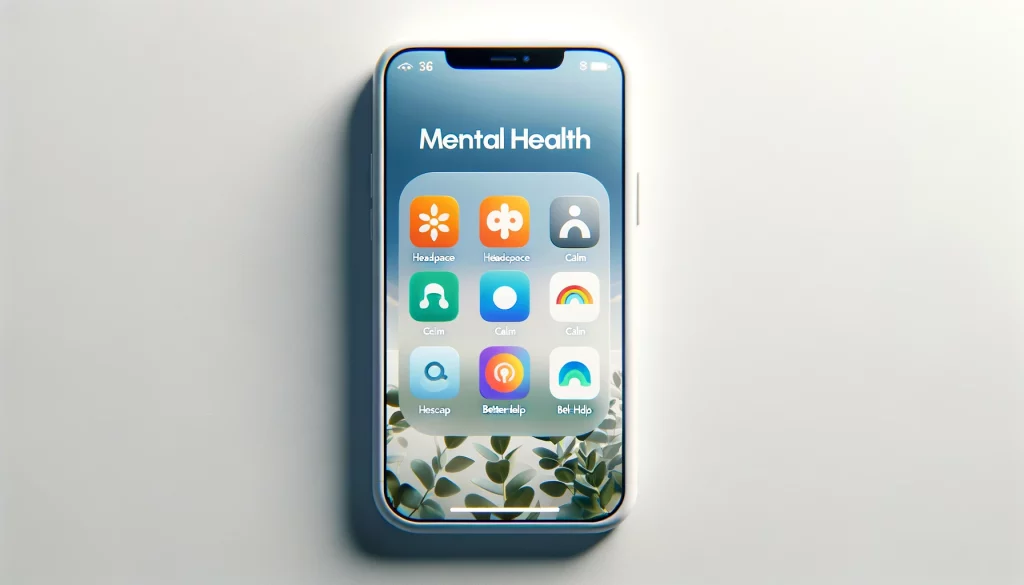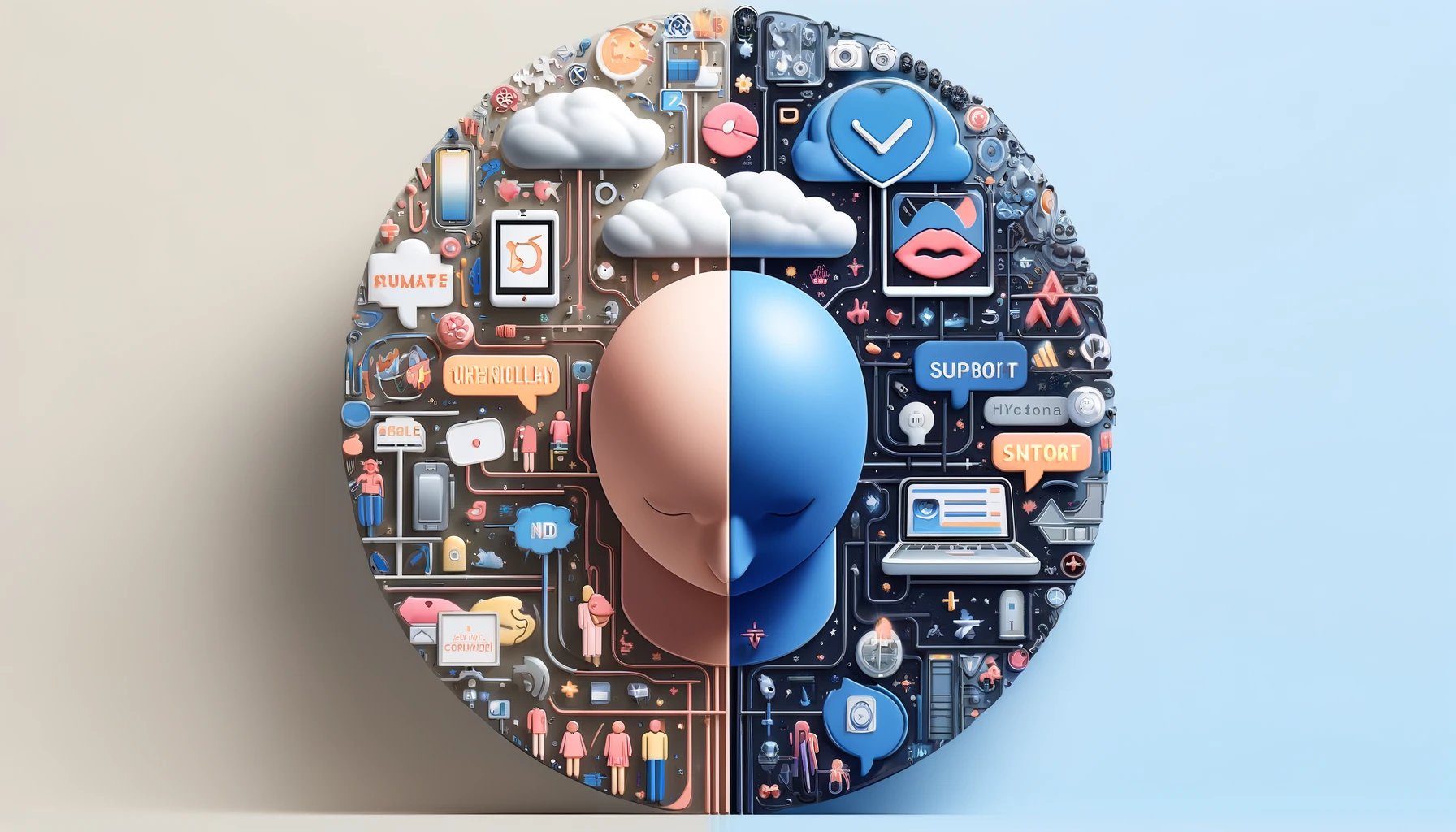Introduction
In today’s digital age, technology and social media are woven into the fabric of our daily lives. From smartphones and tablets to laptops and wearables, our connectivity is virtually constant. While these advancements have brought numerous benefits, they also pose significant challenges, particularly concerning mental health. The dual nature of technology can both enhance and undermine our well-being. This article explores the impact of social media and technology on mental health and provides actionable strategies for achieving balance and well-being in a tech-saturated world.
The Influence of Social Media and Technology on Mental Health
Positive Impacts: Technology and social media have undeniably transformed how we connect with others, offering new avenues for communication and support. Platforms like Facebook, Twitter, and Instagram allow us to maintain relationships across distances and build support networks that can be crucial during tough times. Additionally, the digital age has democratized access to mental health resources and information, making tools and support more accessible than ever before. For instance, apps and online forums provide immediate help and resources for those in need (The Human Capital Hub) (Frontiers).
Negative Impacts: Despite these benefits, the digital age has introduced several challenges. Cyberbullying and online harassment are prevalent issues, with significant negative effects on mental health. Victims often experience increased anxiety, depression, and feelings of isolation (Modern Diplomacy). Furthermore, social media can foster a comparison culture, where individuals feel inadequate by comparing themselves to curated, often unrealistic portrayals of others’ lives. This can lead to low self-esteem and heightened stress (Frontiers). Information overload is another critical issue, as the constant influx of news and updates can overwhelm individuals, leading to stress and difficulty focusing (ie edu).
Strategies for Achieving Balance and Well-being
Digital Detox Practices: Implementing a digital detox can significantly enhance mental well-being. Setting boundaries and screen-time limits is essential. Designating tech-free zones and times, such as during meals or before bedtime, can reduce anxiety and improve focus. Regular breaks from screens help mitigate the negative effects of prolonged screen time (The Human Capital Hub).
Mindfulness and Mental Health Apps: Leveraging technology positively, mental health apps like Headspace, Calm, and BetterHelp offer tools for meditation, stress management, and online therapy. These apps can provide guided meditations, mood tracking, and virtual counseling, making mental health care more accessible and convenient (Frontiers) (Modern Diplomacy).
Building Healthy Online Habits: Curating a positive digital environment is crucial. Following accounts that promote well-being and engaging in online communities that support mental health can create a more positive online experience. Additionally, consciously avoiding toxic interactions and content that induce stress or negativity is beneficial (Modern Diplomacy).
Enhancing Offline Connections: Balancing online interactions with offline connections is vital for mental health. Prioritizing face-to-face interactions can strengthen relationships and provide emotional support that digital interactions often lack. Participating in physical activities and hobbies away from screens can also promote mental well-being (ie edu).
Support Systems and Resources
Access to professional help is increasingly available through teletherapy and online counseling platforms like BetterHelp and Talkspace. These services offer convenient, confidential mental health support. Additionally, online forums and support groups provide communal support and shared experiences, helping individuals feel less isolated (The Human Capital Hub). Educational resources and courses on digital well-being, such as those offered by universities and mental health organizations, can further enhance understanding and implementation of healthy digital habits (ie edu).
Conclusion
Balancing technology use is crucial for maintaining mental health in the digital age. By implementing strategies such as digital detoxes, utilizing mental health apps, building healthy online habits, and enhancing offline connections, individuals can navigate the digital landscape more healthily. Ultimately, a mindful approach to technology use can significantly contribute to overall well-being, helping us thrive in our interconnected world.
The Influence of Social Media and Technology on Mental Health
Positive Impacts: Social media and technology have revolutionized the way we connect, communicate, and access information. Platforms like Facebook, Twitter, and Instagram enable us to maintain relationships and support networks regardless of physical distance. This connectivity can be crucial for mental health, providing emotional support and a sense of belonging, particularly during challenging times (The Human Capital Hub) (Modern Diplomacy). Additionally, digital resources and apps have made mental health support more accessible. Tools such as online counseling, mental health tracking apps, and meditation guides offer immediate assistance and promote mental well-being (Frontiers) (Modern Diplomacy).
Negative Impacts: Despite these benefits, there are significant drawbacks to the pervasive use of social media and technology. Cyberbullying and online harassment are significant issues, leading to increased anxiety, depression, and feelings of isolation for victims (Modern Diplomacy). Social media platforms also contribute to a comparison culture, where users feel inadequate by comparing themselves to the often unrealistic and curated portrayals of others’ lives. This can severely impact self-esteem and mental health (Frontiers). Moreover, the constant influx of information and notifications can lead to information overload, causing stress and difficulty in focusing on important tasks (ie edu).
Strategies for Achieving Balance and Well-being
Digital Detox Practices: Implementing digital detox practices can significantly improve mental well-being. Setting boundaries and screen-time limits is essential. For instance, designating tech-free zones in your home, such as the dining room or bedroom, and setting specific times for digital breaks can reduce anxiety and improve focus (The Human Capital Hub). Regular breaks from screens, particularly during work, can also help mitigate the negative effects of prolonged screen time (ie edu).

Mindfulness and Mental Health Apps: Leveraging technology for mental health through apps like Headspace, Calm, and BetterHelp can be highly beneficial. These apps offer guided meditations, stress management tools, and even online therapy sessions, making mental health care more accessible and convenient (Frontiers) (Modern Diplomacy). They can help users develop mindfulness practices, manage stress, and track their mental health progress.

Building Healthy Online Habits: Creating a positive digital environment is crucial. Curating your social media feeds to follow accounts that promote well-being and engage in supportive online communities can foster a healthier online experience (Modern Diplomacy). Avoiding toxic interactions and limiting exposure to negative content can also significantly reduce stress and enhance mental health.
Enhancing Offline Connections: Balancing online interactions with offline connections is essential for mental well-being. Prioritizing face-to-face interactions strengthens relationships and provides emotional support that digital interactions often lack (ie edu). Engaging in physical activities and hobbies away from screens can further promote mental well-being by reducing stress and improving overall health.
Support Systems and Resources
Accessing professional mental health support has become more convenient through teletherapy and online counseling platforms like BetterHelp and Talkspace. These services offer confidential and flexible mental health support, making it easier for individuals to seek help (The Human Capital Hub). Online forums and support groups also provide communal support and shared experiences, helping individuals feel less isolated (Modern Diplomacy). Additionally, educational resources and courses on digital well-being offered by universities and mental health organizations can enhance understanding and implementation of healthy digital habits (ie edu).
Conclusion
Balancing technology use is crucial for maintaining mental health in the digital age. By implementing strategies such as digital detoxes, utilizing mental health apps, building healthy online habits, and enhancing offline connections, individuals can navigate the digital landscape more healthily. Ultimately, a mindful approach to technology use can significantly contribute to overall well-being, helping us thrive in our interconnected world.
Support Systems and Resources
Accessing Professional Help: The rise of teletherapy and online counseling platforms, such as BetterHelp and Talkspace, has revolutionized mental health support by making it more accessible and convenient. These services offer flexible and confidential therapy sessions, allowing individuals to seek help from the comfort of their homes (The Human Capital Hub) (Modern Diplomacy). This accessibility is particularly beneficial for those with busy schedules or who live in remote areas without easy access to traditional in-person therapy.
Support Groups and Online Forums: Online support groups and forums provide a sense of community and shared experiences, which can be incredibly comforting for individuals struggling with mental health issues. Platforms like Reddit and specialized mental health forums offer spaces where people can connect, share their stories, and offer mutual support. These communities help reduce feelings of isolation and provide practical advice and encouragement (Frontiers) (ie edu).
Educational Resources and Courses: Numerous educational resources and courses on digital well-being are available from universities, mental health organizations, and dedicated websites. These resources offer valuable information on managing digital stress, developing healthy online habits, and understanding the impact of technology on mental health. For instance, organizations like the American Psychological Association (APA) provide comprehensive guides and research on maintaining mental well-being in the digital age (The Human Capital Hub) (Modern Diplomacy).
Conclusion
The digital age, with its constant connectivity and information flow, presents unique challenges and opportunities for mental health. By understanding the dual impact of technology and implementing strategies for balance and well-being, we can navigate this landscape more healthily. Key strategies include setting digital boundaries, leveraging mental health apps, fostering positive online habits, and enhancing offline connections. Access to professional help through teletherapy, support groups, and educational resources further supports mental well-being. Ultimately, a mindful approach to technology use is essential for thriving in our interconnected world.
FAQs on Mental Health in the Digital Age: Strategies for Balance and Well-being
Q1: What are the most common mental health issues associated with excessive use of social media and technology?
Excessive use of social media and technology can lead to several mental health issues, including anxiety, depression, and low self-esteem. Cyberbullying and online harassment can exacerbate these conditions. The constant exposure to idealized images on social media often leads to comparison culture, where individuals feel inadequate compared to others’ seemingly perfect lives, further contributing to mental health struggles (Modern Diplomacy) (Frontiers).
Q2: How can I implement a digital detox without feeling disconnected?
Implementing a digital detox doesn’t mean completely cutting off from technology but rather setting boundaries to create a healthy balance. Start by designating specific times or areas in your home as tech-free zones. Use these periods to engage in offline activities that you enjoy, such as reading, exercising, or spending time with loved ones. Gradually increasing the duration of these breaks can help ease the transition without feeling completely disconnected (The Human Capital Hub) (ie edu).
Q3: What are some effective mindfulness and mental health apps?
There are several effective mindfulness and mental health apps that can help manage stress and improve well-being. Some popular ones include:
- Headspace: Offers guided meditations and mindfulness practices.
- Calm: Provides a variety of relaxation techniques, including sleep stories and breathing exercises.
- BetterHelp: Connects users with licensed therapists for online counseling.
- Moodpath: Tracks emotional states and provides resources for mental health support. These apps offer a range of tools to help users develop mindfulness practices and manage their mental health effectively (Frontiers) (Modern Diplomacy).
Q4: How can I balance my online and offline life to improve my mental health?
Balancing online and offline life involves setting clear boundaries and prioritizing activities that enhance well-being. Some strategies include:
- Setting Screen-Time Limits: Use apps or built-in phone features to monitor and limit your screen time.
- Engaging in Offline Activities: Spend time on hobbies, physical exercise, and face-to-face interactions with friends and family.
- Mindful Technology Use: Be conscious of how and when you use technology, avoiding mindless scrolling and focusing on purposeful activities.
- Creating Tech-Free Zones: Establish areas in your home, such as the dining room or bedroom, where technology is not allowed. These practices can help create a more balanced and fulfilling life, reducing the negative impacts of excessive technology use (The Human Capital Hub) (ie edu).
